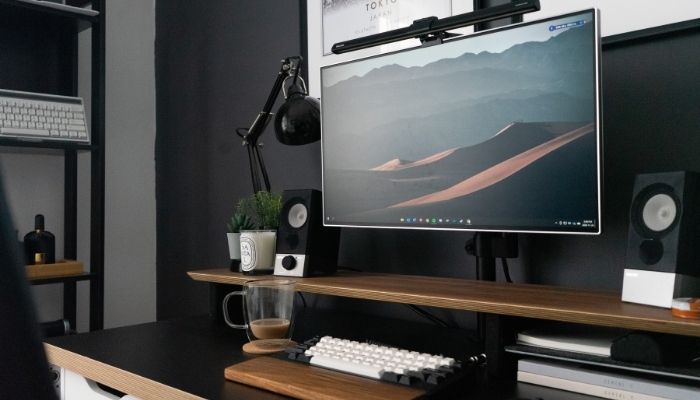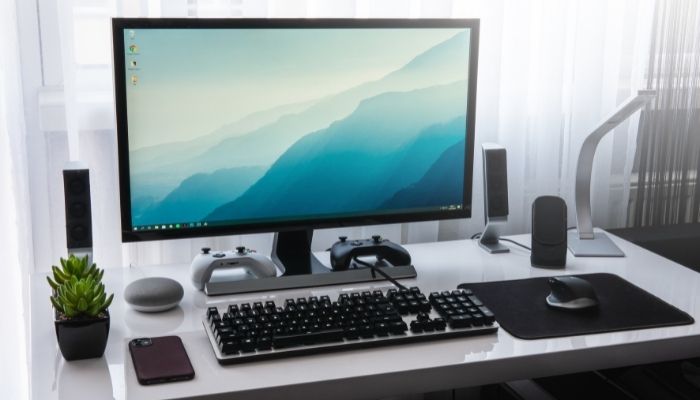If your business requires the use of many devices that must connect to your computer, you will quickly run out of available USB ports. At the very least, one USB port must be free for keyboards, printers, mice, wireless adapters, and charges.
USB ports are included on newer Dell monitors to enable you to connect additional equipment to your computer. However, before you can utilize these ports, they must be activated or powered.
Monitors equipped with USB ports are typically packaged with a USB upstream cable. Your computer’s USB ports enable you to personalize and control your computing experience.
It can significantly improve your enjoyment of working with and gaming on your computer, that is if one of your USB ports fails.
Certain displays like Dell, ASUS, and HP come equipped with two or more USB ports for connecting your USB devices. HOWEVER, these USB ports are inactive unless a Type-A male to Type-B male USB upstream connection is used to connect your monitor to your computer.
What is a USB?
Office desktops in the 1990s were a tangled mass of serial, parallel, and proprietary wires. All of that changed with the advent of the Universal Serial Bus (USB), which standardized computer connectivity via a compact, a low-cost interface called the USB Type-A (USB-A) port/connector.
USB is the most widely used cable interface for computers, tablets, and smartphones, with billions of devices in use every day.
USB has grown through a set of guidelines that define the methods by which cables connect to, communicate with, and powerful computers, mobile devices, and peripherals.
USB4 is the latest incarnation, and like previous iterations, it provides a significant advancement in data transmission speed, video resolution, and power.
What Is The Purpose Of a Monitor’s USB Port?
If your computer display contains USB ports, they are used to increase the connectivity of your PC. The USB ports on your monitor enable it to function as a USB hub.
The male USB connector at the cable’s end is a plug. Female connectors are found on computers or monitors and are referred to as ports or receptacles.
Types of USB Ports
On computer monitors, there are various types of USB ports. Nonetheless, the primary two are discussed below.
A-Type USB
One USB port UP type A (square): This is the typical female USB port found on computers and other electronic devices. This connector is used to attach the monitor to one of the PC’s USB ports. You’ll also require a USB cable similar to those used with printers.
Once connected to the PC, your monitor transforms into a USB hub, allowing you to connect USB devices to the monitor’s other ports in the same way you would attach them to the PC.
B-Type USB
B-type connections are used on most USB 2.0 printers, scanners, and external hard drive cables. They are little in stature and rectangular. These ports attach peripheral devices to the computer, such as a mouse or keyboard.
Whatever you connect to them will communicate with the PC. Contrary to popular belief, these ports are not utilized to display files directly. This functionality is available only on displays equipped with Smart TV capabilities.
C-Type USB
USB 3.0 connections are available on several modern computer monitors. USB 1.1 and USB 2.0 type B USB cables are compatible with the ports. USB 3.0 cables, on the other hand, cannot be plugged into USB 1.1 or 2.0 ports.
These are the most recent USB connectors available. They include an asymmetrical design that overcomes the age-old annoyance of plugging a USB cable in the incorrect position.
For the time being, you’re more likely to see the C connector on the device side, as most computers continue to use Type-A ports.
It does not include the latest Macbook Pro, which features Intel-designed Thunderbolt 3 connectors that support USB C.
There are numerous USB A to USB C cables available that support both USB 2.0 and 3.0. Remember that the USB version’s charging rate will ultimately be limited.
Type 3.0 USB Identification

The most straightforward way to identify a USB 3.0 device is its distinctive blue hue. USB 3.0 ports are also labeled “SS,” which stands for SuperSpeed.
The most reliable method of identifying a USB 3.0 port is its pin count. 9 or 11 contact pins indicate a USB 3.0 port, while four contact pads indicate either a USB 1.1 or a USB 2.0 port. The USB Type-C connector features 24 pins.
USB 3.0 ports and cables are quicker than prior generations, capable of transmitting data at speeds of up to 20Gbps, whereas earlier generations normally transmitted at less than 500Mbps.
USB Ports Used by Smart TV Monitors
Typically, Smart TV monitors have 2-3 USB connections, one designated for external hard drives (5V/1A) and the others for standard memory sticks. These displays are capable of playing multimedia content directly from USB-connected devices.
Additionally, there may be a square USB port connecting to the PC, enabling the remainder to function as a hub or USB extension (see the computer monitors section).
In TV monitors, there is only one USB port for playing multimedia content (pictures, audio, and video) within the constraints (codecs, memory device size, and file format: FAT / NTFS) specified in the user handbook for each model. You cannot use these ports to connect anything other than storage devices (mice, keyboards).
How to Activate a Monitor’s USB Ports?
Follow the steps mentioned below to activate USB Port on monitor.
- Switch off your computer and locate your monitor’s square-shaped Type-B USB port. Typically, the port is located near the spot where the power, VGA, DVI, or HDMI cables are connected.
- Connect the Type-B end of the USB cable to the Type-B USB port on your monitor, and then the other rectangle-shaped Type-A end to a free USB port on your computer. USB ports are located on the front and back of the CPU case.
- Attach a USB device to your monitor after turning on your computer. If your computer does not recognize the USB device, install the monitor’s drivers from the manufacturer’s disc or the manufacturer’s website.
Why Would You Choose a USB Connection Over a Different Type of Connection?
In most circumstances, connecting your monitor via the more traditional VGA, DVI, or HDMI connection is easier and less expensive. However, USB provides plug-and-play convenience and minimizes latency, and improved video playback.
Expandability
Another advantage of USB over other connecting methods is its expandability. You can add additional monitors to your computer via USB. No further hardware, such as graphics cards, is required. With Windows Multipoint Server, you can connect up to 14 more screens. A Mac can have four more screens.
With several screens connected through USB, you don’t need additional graphics cards to deliver a video at a conference. This design reduces installation and maintenance costs while simplifying infrastructure.
Another situation where multiple display monitors may be beneficial is at a retail checkout. One screen would be for the cashier, and the other for the paying customer.
Ease of Use and Portability
USB interfaces for computer monitors offer convenience and portability. If you want to connect a display through standard connectors, you need a video cable. It is accomplished by using a VGA, HDMI, or DVI cable.
Additionally, you would require a power cord and, most likely, a USB connection for touch data. You would require a power brick or electrical outlet to attach the power cable.
On the other hand, a USB monitor uses only one connection to transmit touch data, power the monitor and accessories, and transmit high-resolution video.
Reduced Space
USB connectors take significantly less space than other connector types. Cables and connectors are slimmer and more compact than those used with DVI, VGA, and HDMI. Additionally, you need a single wire to transfer data and charge the monitor.
Frequently Asked Question
Why Is My USB Port Not Working?
There are several possible reasons for a USB device to be unrecognised. You could have a damaged gadget or a port issue. The computer is having trouble detecting USB devices. USB Selective Suspend is enabled.
Why Does Monitor Have USB Port?
A monitor may require a USB connection to a computer to accommodate a webcam, speakers, and microphone. The monitor becomes a hub by connecting peripherals such as a mouse and keyboard to the display rather than the computer via a USB hub.
Why Did Not My USB Ports Work on My Monitor?
Ensure that the monitor is connected to the computer via a USB cable in addition to the video cable. Ascertain that the USB cable’s opposite end is linked to the computer. Replace the USB cable to ensure the issue is cable-related.
Conclusion
Computer monitors come with various connections that allow you to expand your visual workplace. The increase in accessible ports is driven by increased demand for higher-resolution monitors.
Occasionally, a single-screen display is insufficient. When a single display is inadequate, adding a monitor enables you to run more programs and multitask more effectively.
Connecting a monitor through USB can result in higher quality, faster speeds, and a more compact computer connection. As a result, this article will assist you in determining How to Activate USB Ports on Monitor, and it is a useful skill to have. USB-C is the preferred connection type, but USB 1.1 and USB 2.0 also work well.

